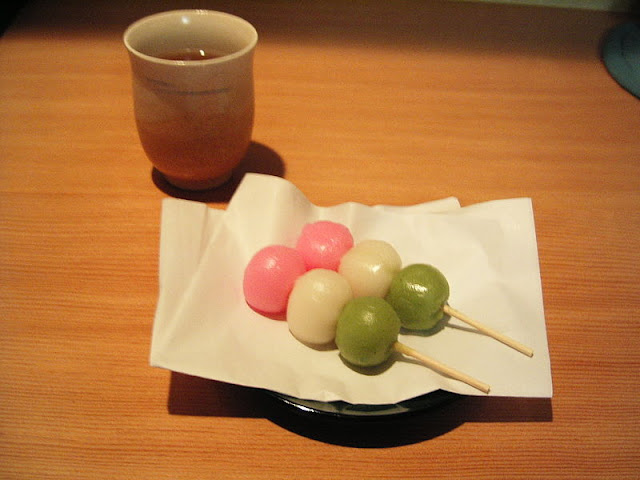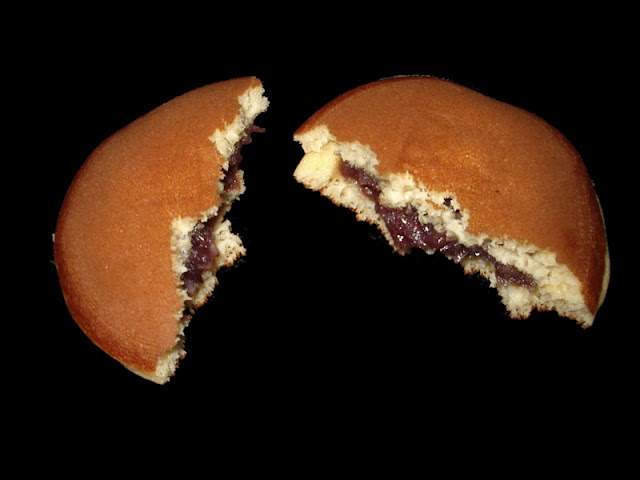5 Most Popular Traditional Japanese Desserts that one should try while visiting Japan
Japan, along with it's rich culture and stunning landscape, has become a
sure destination for travelers. It is also home to many delicious
foods that could make anybody drool. And about desserts.. it can't be
described through words
So in this article, I have listed five popular traditional dessert that one should check out while visiting Japan..
[image source]
Kasutera or castella is a Japanese sponge cake. It is really popular in Japan. It is simply made from sugar, flour, eggs and starch syrup. The cake was actually bought to Japan by Portuguese merchants in the 16th century. The name is also derived from Portuguese, "Pão de castela", which means "bread from castle". Kasutera is sold in almost all over Japan, but Nagasaki's Kasutera are the most popular in Japan. Nagasaki is considered as " Kasutera Central " and Kasutera is a popular souvenir to bring from Nagasaki, while visiting it.
Dango
Dango is a traditional sweet dumplings. They are chewy, small, steamed dumplings made from sweetened rice flour and water, made into paste and molded into bite size balls. Dango can be eaten in anytime in a year, but some varieties are eaten in specific seasons. These varieties of dango are usually named after different seasoning served with it. Dango are also added in other desserts, like anmitsu and oshiruko. Three or four dangos are usually served on a skewer and are can be eaten fresh.
Daifuku is a traditional Japanese desert, consisting of small round mochi or rice cakes. Daifuku is commonly filed with anko [sweetened red bean paste] made from azuki beans.
Daifuku comes in several varieties. The most popular ones are white, pale green or pale pink colored mochi, stuffed with sweetened red bean paste.
Daifuku comes in two size, one is a bug palm size and other one is small with only 1.2 inch diameter. Daifuku are generally covered with a fine layer of corn or potato starch, to prevent them from sticking to each other or to fingers.
This popular desert which is eaten with green tea in Japan.
Yokan is a traditional thick jellied dessert made from red azuki beans, agar and sugar.
There are two main variety of yokan: neri yokan and mizu yokan. Mizu in Japanese means water, and it indicates that mizu yokan is made with more water than neri yokan.
Yokans are made solid in box form and are eaten in slices.
Dorayaki is also called "Misaka" from Mt. Misaka in Nara, the next destination to Osaka.
So, Dorayaki is anko [sweetened red bean paste], sandwiched between two small pancake like patties made from castella.
A perfect traditional dessert for everyone, who never had any traditional dessert before
Did I miss something? Please let me know via comments and also if you liked the post then please share it with others and subscribe to my blog to get free updates via email. Thank you very much! :)
So in this article, I have listed five popular traditional dessert that one should check out while visiting Japan..
5. Kasutera
Kasutera or castella is a Japanese sponge cake. It is really popular in Japan. It is simply made from sugar, flour, eggs and starch syrup. The cake was actually bought to Japan by Portuguese merchants in the 16th century. The name is also derived from Portuguese, "Pão de castela", which means "bread from castle". Kasutera is sold in almost all over Japan, but Nagasaki's Kasutera are the most popular in Japan. Nagasaki is considered as " Kasutera Central " and Kasutera is a popular souvenir to bring from Nagasaki, while visiting it.
Dango
Dango is a traditional sweet dumplings. They are chewy, small, steamed dumplings made from sweetened rice flour and water, made into paste and molded into bite size balls. Dango can be eaten in anytime in a year, but some varieties are eaten in specific seasons. These varieties of dango are usually named after different seasoning served with it. Dango are also added in other desserts, like anmitsu and oshiruko. Three or four dangos are usually served on a skewer and are can be eaten fresh.
4. Daifuku
[image source]
Daifuku is a traditional Japanese desert, consisting of small round mochi or rice cakes. Daifuku is commonly filed with anko [sweetened red bean paste] made from azuki beans.
Daifuku comes in several varieties. The most popular ones are white, pale green or pale pink colored mochi, stuffed with sweetened red bean paste.
Daifuku comes in two size, one is a bug palm size and other one is small with only 1.2 inch diameter. Daifuku are generally covered with a fine layer of corn or potato starch, to prevent them from sticking to each other or to fingers.
This popular desert which is eaten with green tea in Japan.
3. Yokan
[image source]
Yokan is a traditional thick jellied dessert made from red azuki beans, agar and sugar.
There are two main variety of yokan: neri yokan and mizu yokan. Mizu in Japanese means water, and it indicates that mizu yokan is made with more water than neri yokan.
Yokans are made solid in box form and are eaten in slices.
2. Dango
Dango is a traditional sweet dumplings. They are chewy, small, steamed dumplings made from sweetened rice flour and water, made into paste and moulded into bite size balls.
Dango can be eaten in anytime in a year, but some varities are eaten in
specific seasons. These varities of dango are usually named after
different seasoning served with it. Dango are also added in other
desserts, like anmitsu and oshiruko.
Three or four dangos are usually served on a skewer and are can be eaten fresh.
1. Dorayaki
Yes, you're right! Doraemon's favorite dessert and also the whole Japan's. Dorayaki is one of the most popular dessert in Japan, loved by both young and old.Dorayaki is also called "Misaka" from Mt. Misaka in Nara, the next destination to Osaka.
So, Dorayaki is anko [sweetened red bean paste], sandwiched between two small pancake like patties made from castella.
A perfect traditional dessert for everyone, who never had any traditional dessert before
Did I miss something? Please let me know via comments and also if you liked the post then please share it with others and subscribe to my blog to get free updates via email. Thank you very much! :)











Leave a Comment